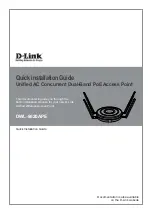
188
www.gateway.com
■
Layer 5, the Session layer, defines protocols for initiating, maintaining, and ending
communication and transactions across the network. Some common examples of
protocols that operate on this layer are network file system (NFS) and structured query
language (SQL). Also part of this layer are communication flows like single mode (device
sends information bulk), half-duplex mode (devices take turns transmitting information
in bulk), and full-duplex mode (interactive, where devices transmit and receive
simultaneously).
■
Layer 6, the Presentation layer, defines how information is presented to the application.
It includes meta-information about how to encrypt/decrypt and compress/decompress
the data. JPEG and TIFF file formats are examples of protocols at this layer.
■
Layer 7, the Application layer, includes protocols like hypertext transfer protocol
(HTTP), simple mail transfer protocol (SMTP), and file transfer protocol (FTP).
Packet
Data and media are transmitted among nodes on a network in the form of
packets
. Data
and multimedia content is divided up and packaged into
packets
. A packet includes a small
chunk of the content to be sent along with its destination address and sender address.
Packets are pushed out onto the network and inspected by each node. The node to which
it is addressed is the ultimate recipient.
Packet Loss
Packet Loss
describes the percentage of packets transmitted over the network that did not
reach their intended destination. A 0 percent package loss indicates no packets were lost
in transmission.
QoS
features are designed to minimize packet loss.
PHY
The
Physical Layer
(PHY) is the lowest layer in the network layer model (see
OSI
). The
Physical Layer conveys the bit stream - electrical impulse, light or radio signal -- through
the network at the electrical and mechanical level. It provides the hardware means of
sending and receiving data on a medium, including defining cables,
NIC
s, and physical
aspects.
Ethernet
and the
802.11
family are protocols with physical layer components.
PID
The
Process Identifier
(PID) is an integer used by Linux to uniquely identify a process. A
PID is returned by the fork()system call. It can be used by wait() or kill() to perform actions
on the given process.
Port Forwarding
Port Forwarding
creates a ‘tunnel’ through a firewall, allowing users on the Internet access
to a service running on one of the computers on your
LAN
, for example, a Web server,
an FTP or SSH server, or other services. From the outside user’s point of view, it looks like
the service is running on the firewall.
Summary of Contents for 7001 Series
Page 1: ...User Guide Gateway 7001 Series Access Point ...
Page 19: ...14 www gateway com ...
Page 30: ...25 www gateway com Type the user name and password and click OK ...
Page 39: ...34 www gateway com Setting configuration policy for new access points ...
Page 59: ...54 www gateway com ...
Page 71: ...66 www gateway com ...
Page 175: ...170 www gateway com ...
Page 176: ...Chapter 9 171 Troubleshooting and Getting Help Known problems Technical support ...
Page 179: ...174 www gateway com ...
Page 180: ...Appendix A 175 Glossary ...
Page 201: ...196 www gateway com ...
Page 202: ...Appendix B 197 Specifications ...
Page 206: ...Appendix C 201 Safety Regulatory and Legal Information ...
Page 213: ...208 www gateway com ...
















































